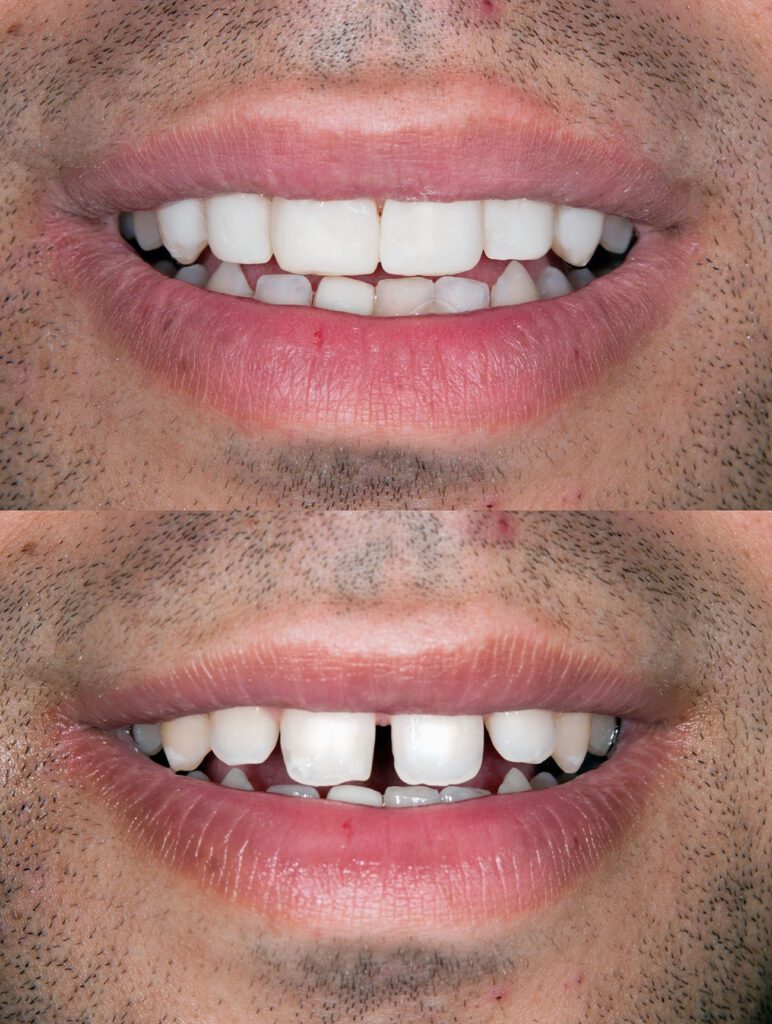When it comes to fixing minor imperfections in your smile, you have a few different options. But the two that are often confused with one another the most are Lumineers and porcelain veneers. While Lumineers in Palmdale and Lancaster, CA, are a type of veneer, they are different from traditional porcelain veneers. The difference in material and preparation provides for a generally quicker, more cost-effective, and less invasive treatment option.

The Difference Between Lumineers and Porcelain Veneers
Lumineers and porcelain veneers can both work to cover minor imperfections in your teeth. They both are a type of covering that your dentist places over your natural teeth to help shape and protect them. While the end result is the same, there are many differences to consider when choosing the right treatment option for your mouth.
The Materials
Porcelain veneers are made out of just that: porcelain. Lumineers, however, are made from a thinner, more translucent material. While this material is still durable, it’s not as long-lasting as porcelain veneers. Porcelain veneers can last up to 30 years with good oral hygiene and routine dental exams. Lumineers, on the other hand, will likely only last up to 20 years with the same care and maintenance.
The Preparation
The main difference between Lumineers and porcelain veneers is the preparation stage. With traditional porcelain veneers, your dentist needs to remove a small amount of your natural tooth structure. This ensures there is enough room for the veneer to fit comfortably. Because Lumineers use a thinner material, they don’t need as much room in your mouth. With Lumineers, your dentist simply needs to ensure your tooth is clean and healthy, with no removal necessary.
The Final Results
Because Lumineers are more cost-effective and less invasive as a procedure, they are often an appealing option. However, it is important to keep in mind that the material used in Lumineers isn’t as effective as porcelain, meaning you may find the work more noticeable in your smile. Lumineers are also slightly less durable, meaning they are more likely to be damaged or even fall off. But with the right oral care and routine dental appointments, Lumineers can help brighten and improve your smile for a long time.
Are Lumineers Right for You?
If you’re not confident in your smile, there are options available to help. At Premier Dental Care, we’re dedicated to helping all of our patients achieve a healthy smile they can be proud of. We offer both porcelain veneers and Lumineers at our Palmdale and Lancaster, CA, offices. Give us a call at (661) 231-7031 (Palmdale) or (661) 231-7157 (Lancaster) to learn more about our treatment options and to schedule an initial consultation. Even if Lumineers aren’t right for you, we’ll create a personalized treatment plan to help you achieve your goals.
